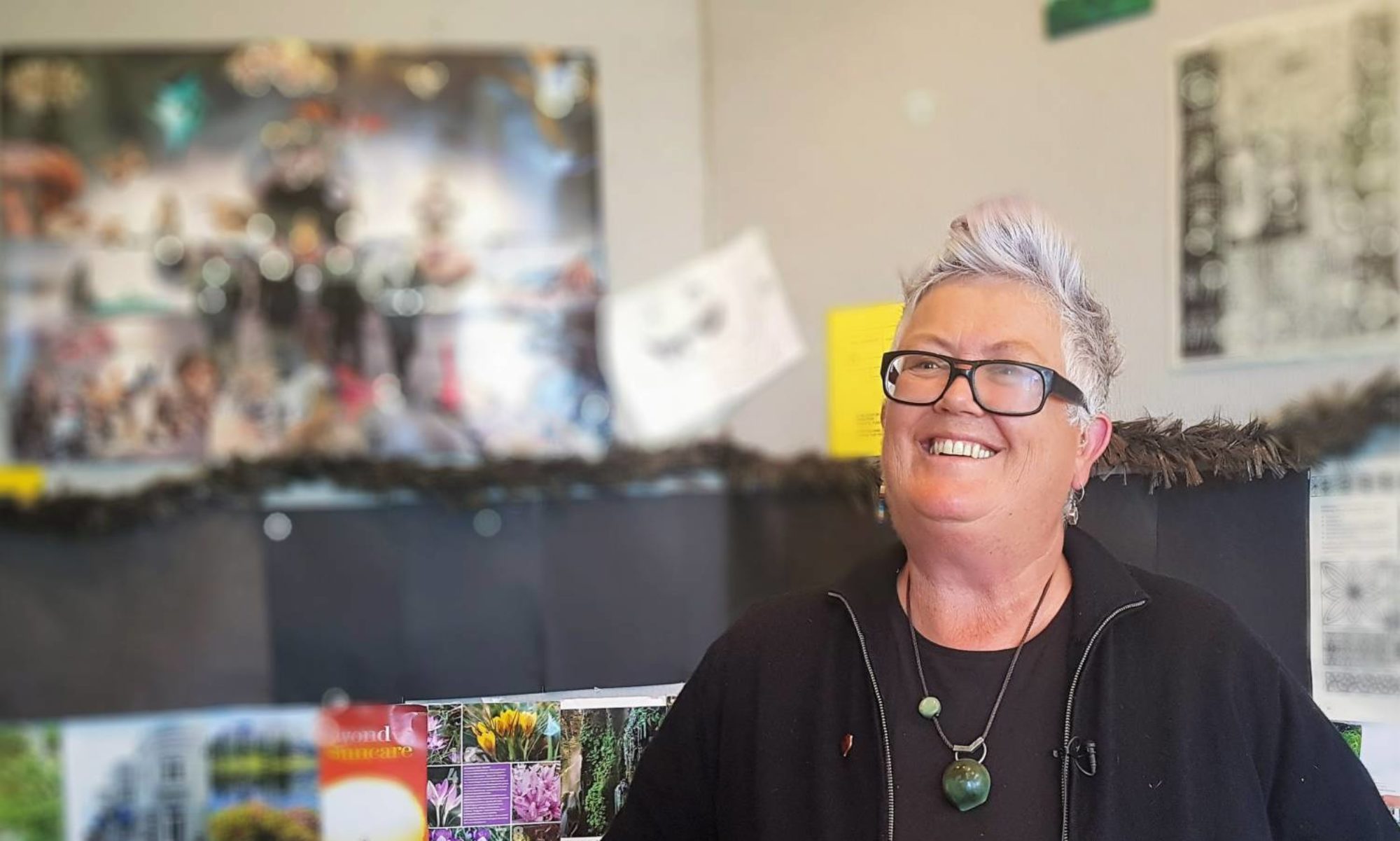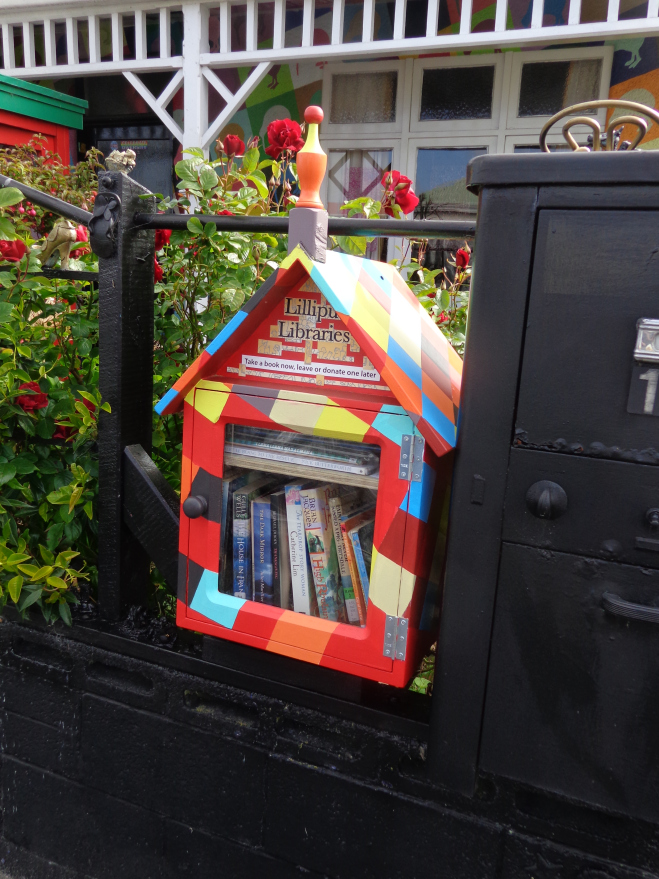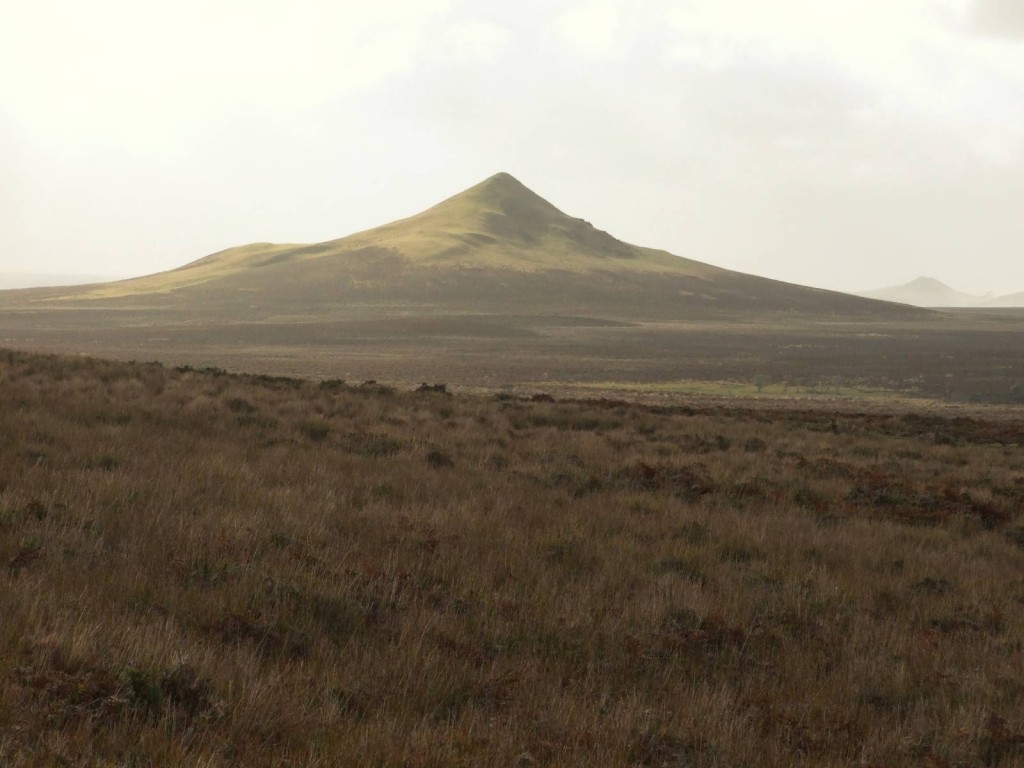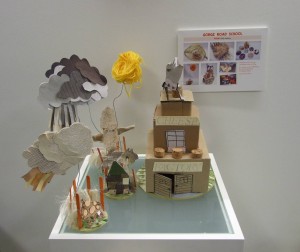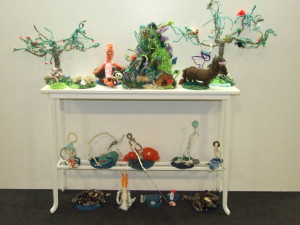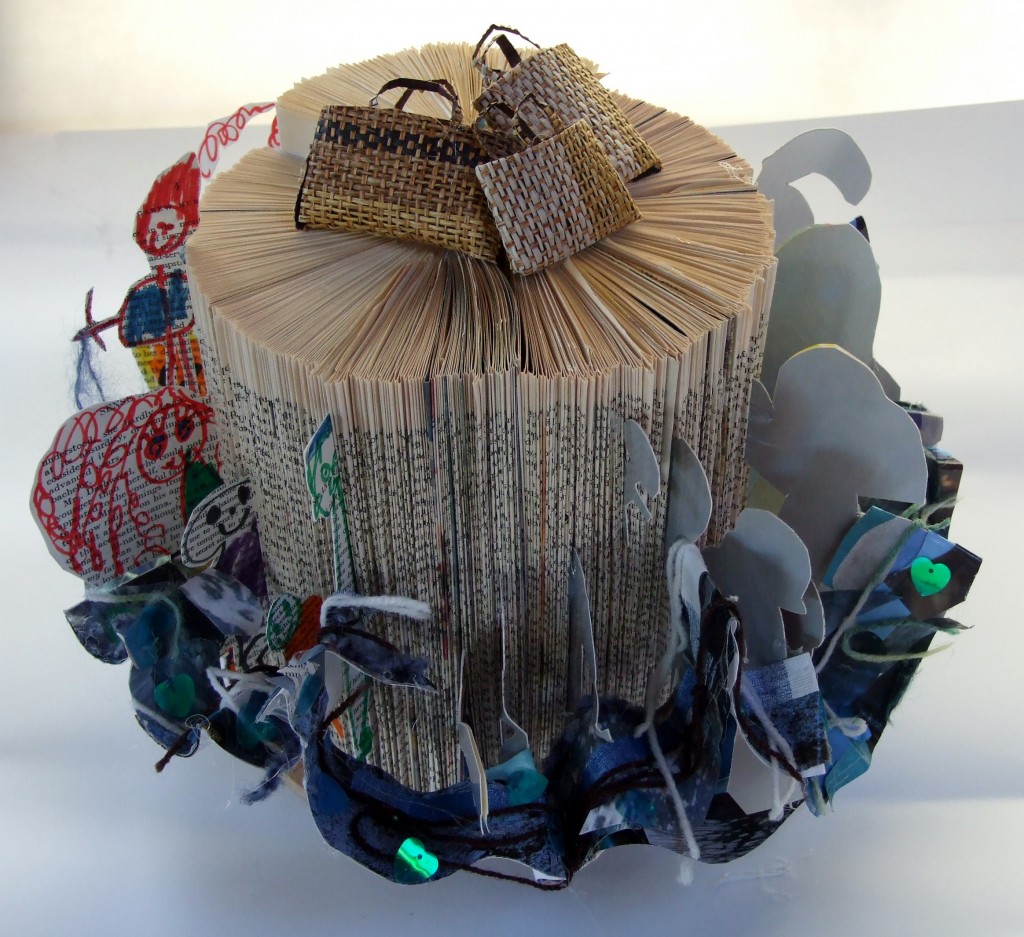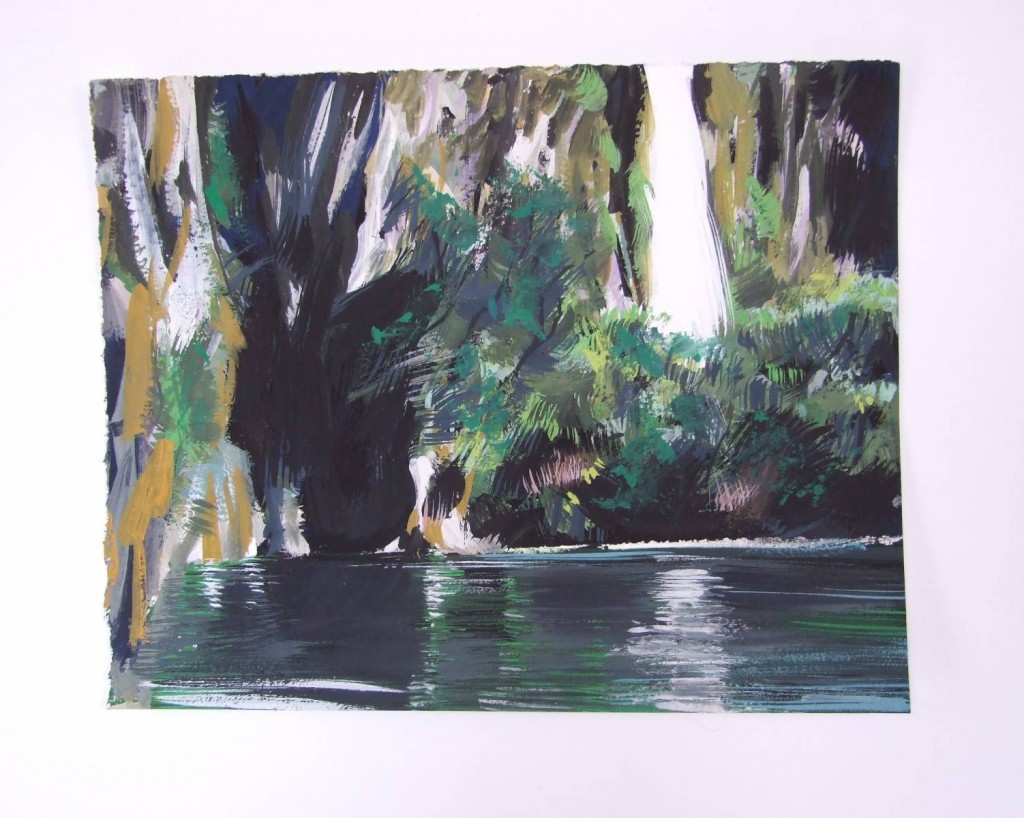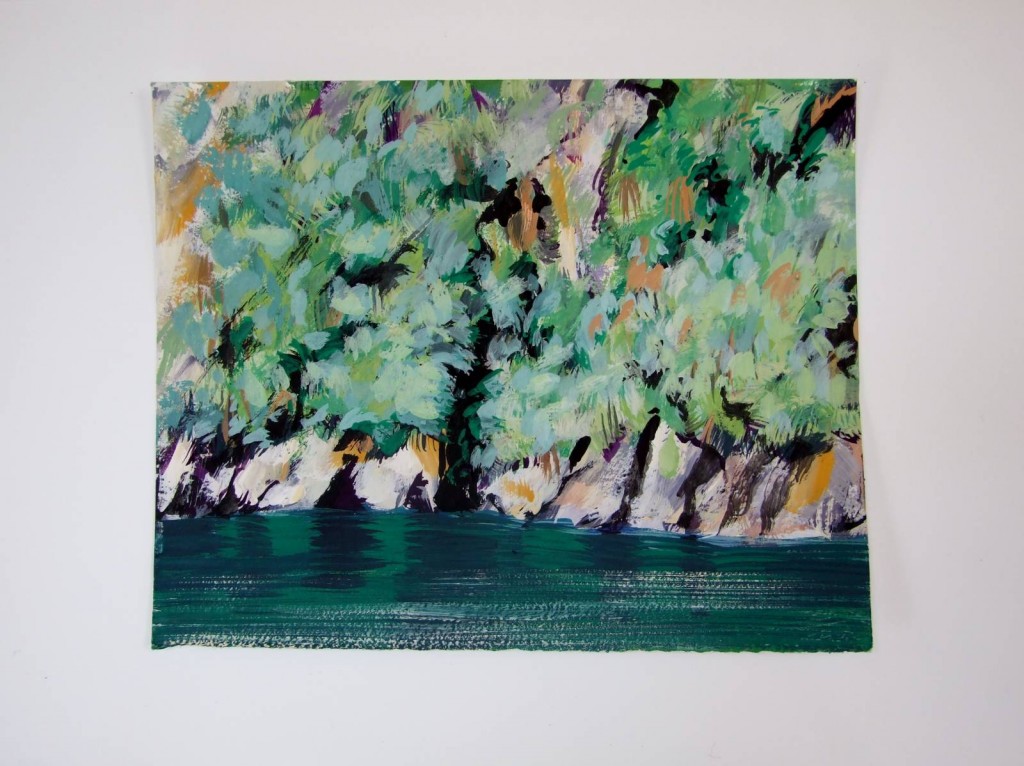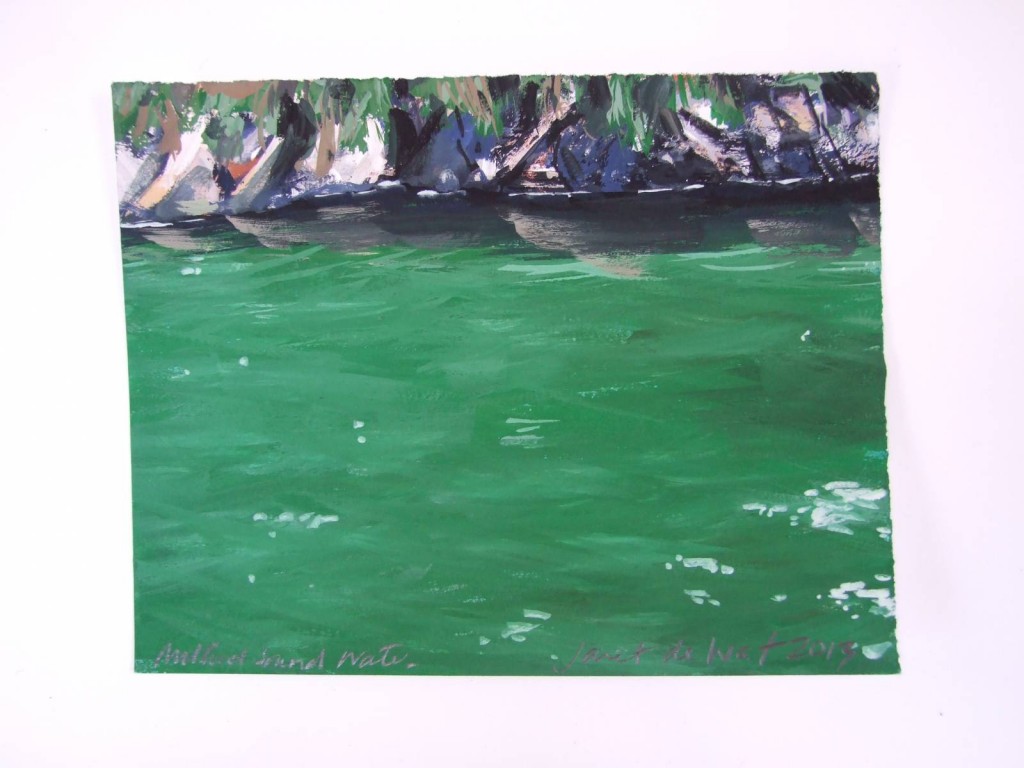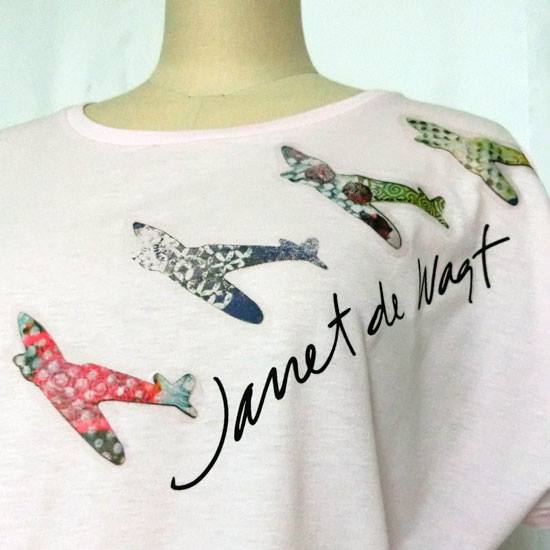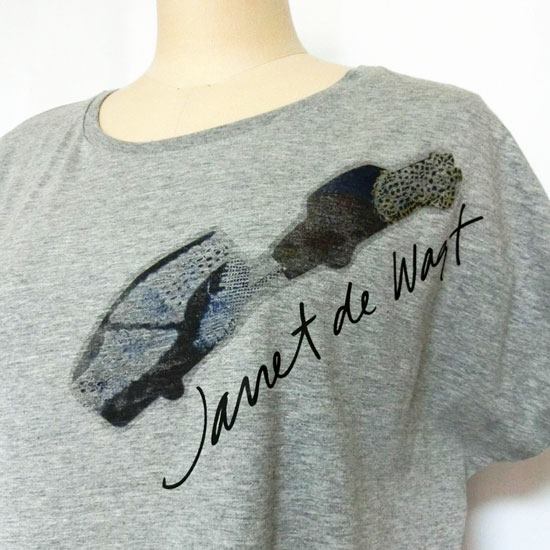I am very happy (and so are the neighbours) to be a guardian of this tiny library. I painted it to match the house. It has been very busy since its opening!! These Lilliput libraries are popping up all over Dunedin, painted by Dunedin artists – another great community project. You can read all about this project at: New Zealand Book Council
The Dutch New Zealand Project
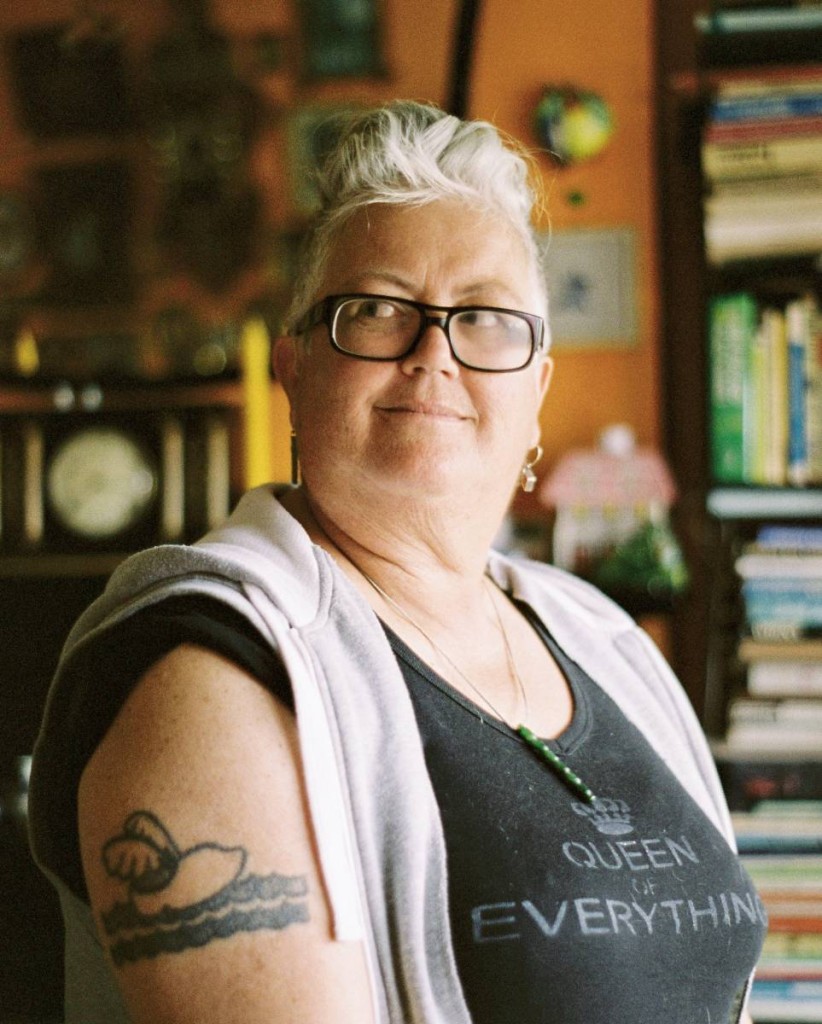 Helena de Kok is a Dutch photographer based in Wellington. She is currently working on a photography project supported by the Netherlands Embassy, showcasing and celebrating members of the Dutch community (first and second generation) in New Zealand.
Helena de Kok is a Dutch photographer based in Wellington. She is currently working on a photography project supported by the Netherlands Embassy, showcasing and celebrating members of the Dutch community (first and second generation) in New Zealand.
Helena interviewed me at home in Dunedin and has included my story in this project which you can see and read more about at: Dutch New Zealand
The Chatham Islands
Because I have a very busy artistic life, some things get put a bit on the back burner – but this has the positive of allowing me to take the time to really reflect on my experiences in different places. I had always wanted to visit the Chatham Islands and this trip was very special because I was taken under the wings of the local people. I had the best boil up ever, honed my darts’ skill, enjoyed wonderful warm hospitality, talked about art and the island, got taken to some amazing views, visited the neat museum, four wheel drived to the edge of the land and had many other amazing adventures.
I hope I can return to this very special place in the future.
Back to the Black Forest, Germany
I have this continuing relationship with this area where I enjoy painting in the countryside – so different from the south of New Zealand! This trip was combined with a few community workshops, one of which was question and answer sessions with students at Mathilde Pla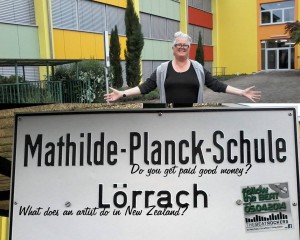 nck Schule in Lorrach – a school similar to a NZ polytechnic. They were particularly interested in the fact that I was a full time woman artist as it is very hard to make a living in the arts in Germany.
nck Schule in Lorrach – a school similar to a NZ polytechnic. They were particularly interested in the fact that I was a full time woman artist as it is very hard to make a living in the arts in Germany.
The students were also interested in New Zealand, the culture and the lifestyle of young people. They were intrigued that young people in NZ had cars…..
Another community workshop was at the Frauenberatung Centre, a place where women come for individual therapies that often include art. I worked with a therapist and her client on developing different creative techniques to explore different emotions.
The Mataura River Art Project goes to Parliament!!
It is very exciting to let you know that the project is now on show at Bowen House Exhibition Space at parliament. It will be on show there from 26 August – 18 September 2015! A very big thank you to all those who have made this possible, in particular the Gore District Council for funding the van that took it up there!
Check it out on parliament’s web site:
‘From Whaling to Watching’ Opening Night
Friday 10 April at Gallery De Novo was opening night for my latest show. My dear friend Karen gave the audience a brief history of my painting story.
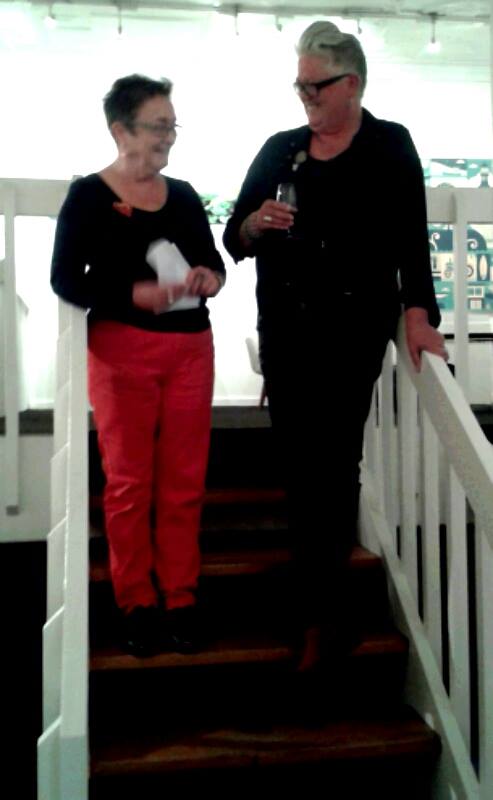 ‘Welcome to Janet’s latest and extraordinary exhibition!
‘Welcome to Janet’s latest and extraordinary exhibition!
Thank you De Novo!
I’d like to take you on a little journey……of Janet’s art over the years.
People know Janet for her landscapes but actually she is a woman of many talents, and I’m not just talking about her art……
I met Janet last century when she was a quiet woman painting huge murals in Christchurch and she also painted water colours. The first whale sighting occurs in 1985 when we went to Tonga, long before anyone knew to go there to watch whales. Janet read a book called Moby Dick and that left her many more questions than answers about the big mammal.
In Australia Janet started to incorporate politics more subtly into her art, she painted kangaroos – dead in the country, shot by locals, yet kept in zoos exhibited as the nation’s icon.
In the United Kingdom Janet’s focus turned to painting people, people in their place whereever that might have been – markets, home, laughing, playing.
On return to New Zealand, about 20 years ago, Janet fell in love with the landscape – the largeness of Otago and Southland. She is well known for her large and small paintings of landscapes yet is still talented enough to be accepted in the New Zealand Painting and Printmaking Awards with her painting of Mary.
Janet is also prolific in her work in the community, working in schools, speaking at conferences, judging art. She has the ability to make something from nothing. The Mataura River Art Project is an example of this, where all the pupils of all the schools along the Mataura River made a piece of art showing the effect the river has on each of them.
Community Art is Janet’s expression that art should be accessible to all. Her Art n’ Mind shapes and paintings expand this value, making shapes that can fit on any wall, art that is small in size and smaller in price. I’m sure most of you here tonight have a heart, a house, a bird or a plane on your wall. And tonight you see whales….
About 15 years ago Janet started going to Tuatapere (known to many as Aunt Tui’s). She walks up and down Te Waewae Bay head down, eyes focused, examining the beach. Yes she has done many paintings from the beach but Janet is searching , desperately looking for valuable ambergris – the vomit or maybe fossilized pooh of whales. No doubt Janet will be looking for the next 15 years…. then she will be rich!!
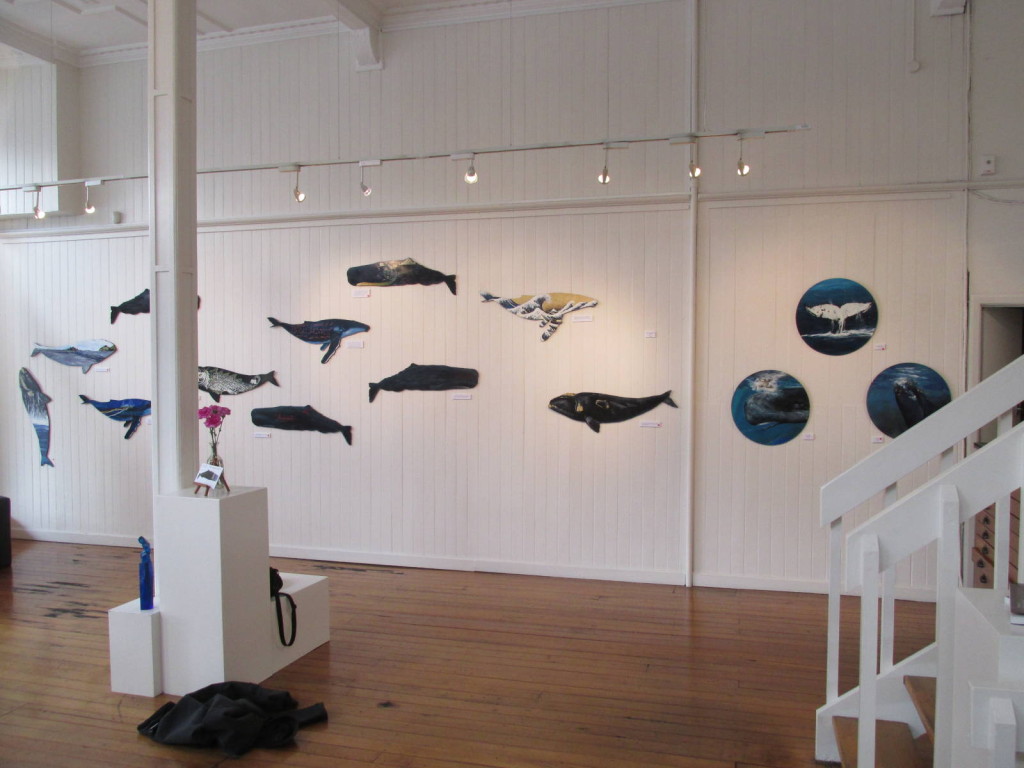 Tonight Janet has shared not only her magnificent whales but snippets of knowledge she has gained on the way. Tonight Janet is both an artist and a walking encyclopedia; ask her a question about whales and she will know the scientific answer. Each whale tells a story of life, politics and unfortunately death for many whales. But, we are told that whales are making a comeback and tonight we can celebrate that. Thank you.’
Tonight Janet has shared not only her magnificent whales but snippets of knowledge she has gained on the way. Tonight Janet is both an artist and a walking encyclopedia; ask her a question about whales and she will know the scientific answer. Each whale tells a story of life, politics and unfortunately death for many whales. But, we are told that whales are making a comeback and tonight we can celebrate that. Thank you.’
[whohit]home[/whohit]
Whales
I’ve done a lot of research and have spent hours reading books about these giants of the sea. I wanted to put this information into a visual format and this resulted in 22 works currently exhibited at Gallery De Novo in Dunedin.
For a very long time now, as I have been out on location looking at and painting the sea, I have wondered what was out there in the depths, just as when I was painting landscapes I wondered who planted that tree and who had walked and shaped the land I was painting.
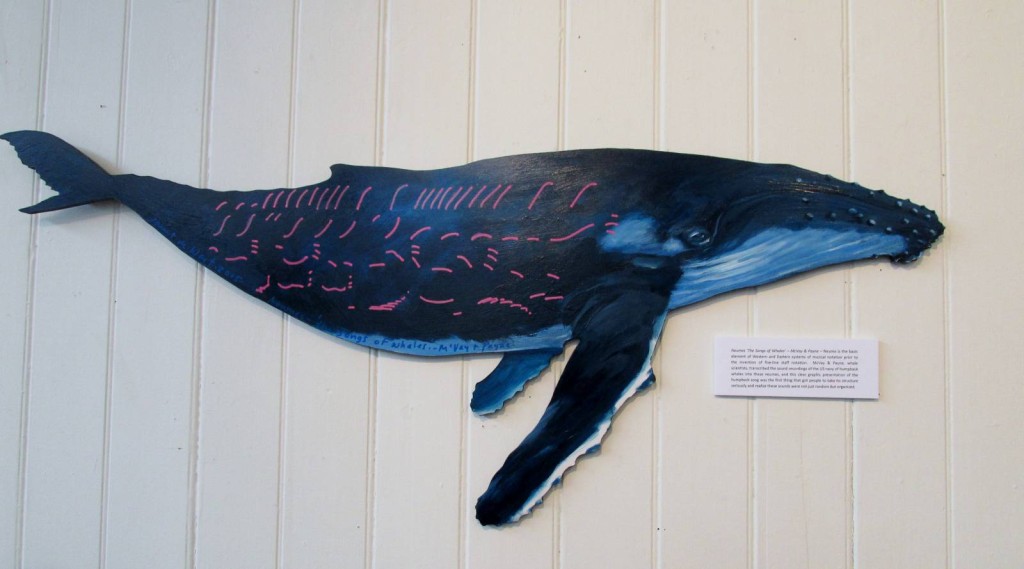
My most recent painted shapes were penguins, birds who inhabit the land and the sea, so it has been a natural progression to venture further and deeper into the ocean and become interested in the giants of the sea, the mighty whales. Their stories and their journeys are both rich and inspiring – from the Ngai Tahu story of the creation of Foveaux Strait and the Solander Islands, to the recording of the Humpback whales’ song on the golden record carried on Voyager 1 into the extremities of outer space. The Humpbacks’ and other whales’ songs were put into the earliest of musical languages, neumes in the 1970s, and thus given the first recognition of their fluid, musical and song-like patterns and qualities. These and the myriad of other stories about whales are truly amazing and I have tried to capture these stories visually.
Watching and painting the sea, particularly at night time, I have also been struck by the glow and fluorescence of the waves on the sea. Further research has taught me of the many creatures and organisms in the sea that have the power to luminesce and are responsible for this bioluminescence that I have sometimes seen. I have tried to recreate this light in some of these paintings, so that after they have been exposed to light they fluoresce in the dark as the ocean does.
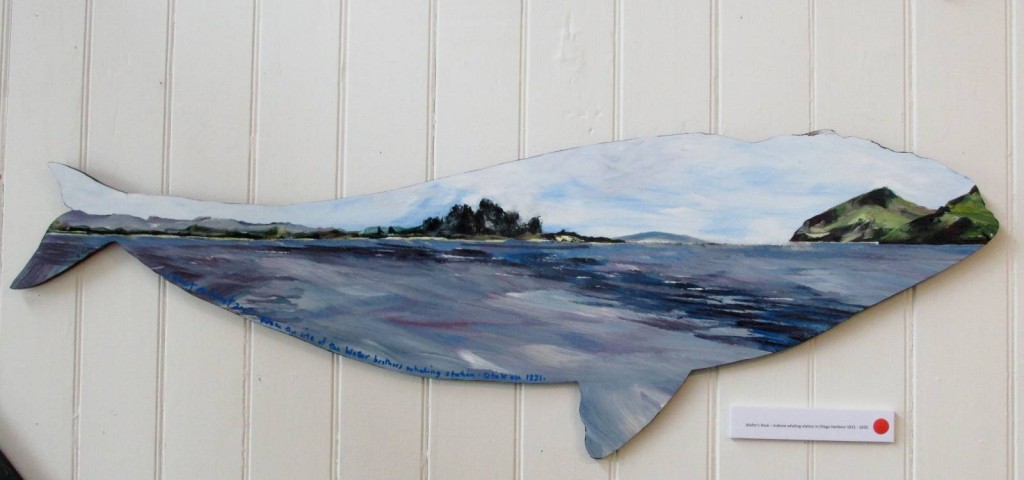
I love information and the social impact of why we do things. Whaling had a huge impact on the early settlement of New Zealand. In many New Zealand history books whaling has been seen in a romantic way, a life of adventure and freedom on the high sea. The truth was very different and it was an extremely hard and dangerous life as uttered in this whaler’s lament from the 1820s:
They will rob you
They will use you
Worse than any slaves
Before you go whaling boys
You best be in your graves.
In fact whaling went on in New Zealand for a total of 172 years, finally stopping in 1964. There were many whaling stations established in Otago from the late 1820s when shore based whaling began – for example Moturata Island at Taieri Mouth.
Today the whales themselves still can’t escape from the threats of human activity – from the still continuing controversial hunting, to other pressures from modern human life such as plastic and chemical pollution, warming oceans, sonar disruption and propeller strikes from ships.
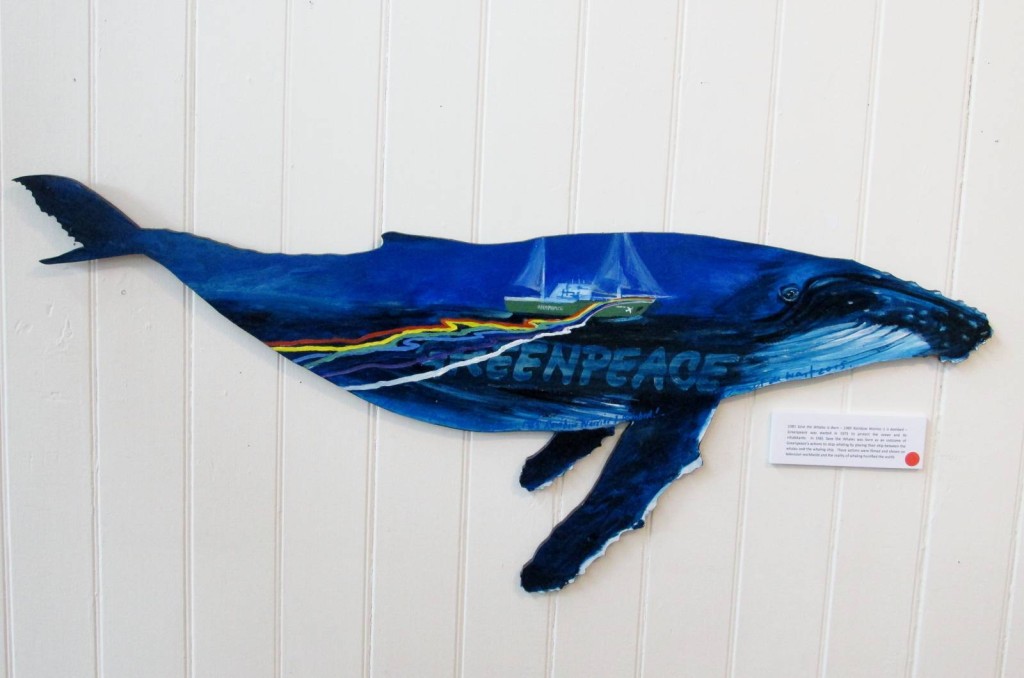
Whale watching is all about time …… you have to be out there on the water. You won’t see them in bad weather; you can’t see them at night; most of the time they are hidden beneath the surface.
But I know they are there as I paint the seas from the South Island of New Zealand.
The Mataura River Art Project goes to Invercargill, NZ
Dusky Sound & Anchor Island
I feel honoured to have been invited on a DOC/ Fiordland Conservation Trust week long trip to Dusky Sound. This is the second time I will have visited Dusky – I still think of it as one of the most beautiful places in the world I have ever painted. The last time I produced 3 bodies of work about Dusky – one was painted on location, dealing with the ever present rain and transportation problems; the second reflected my fascination with the story of the moose, the third was about the early people who lived in this remote wet place. This trip I will continue working on location on small works on paper – less logistic problems in the helicopter!!
I’m looking forward to Anchor Island in my wet weather gear and camp stool, coming nose to nose with a kakapo!!!
